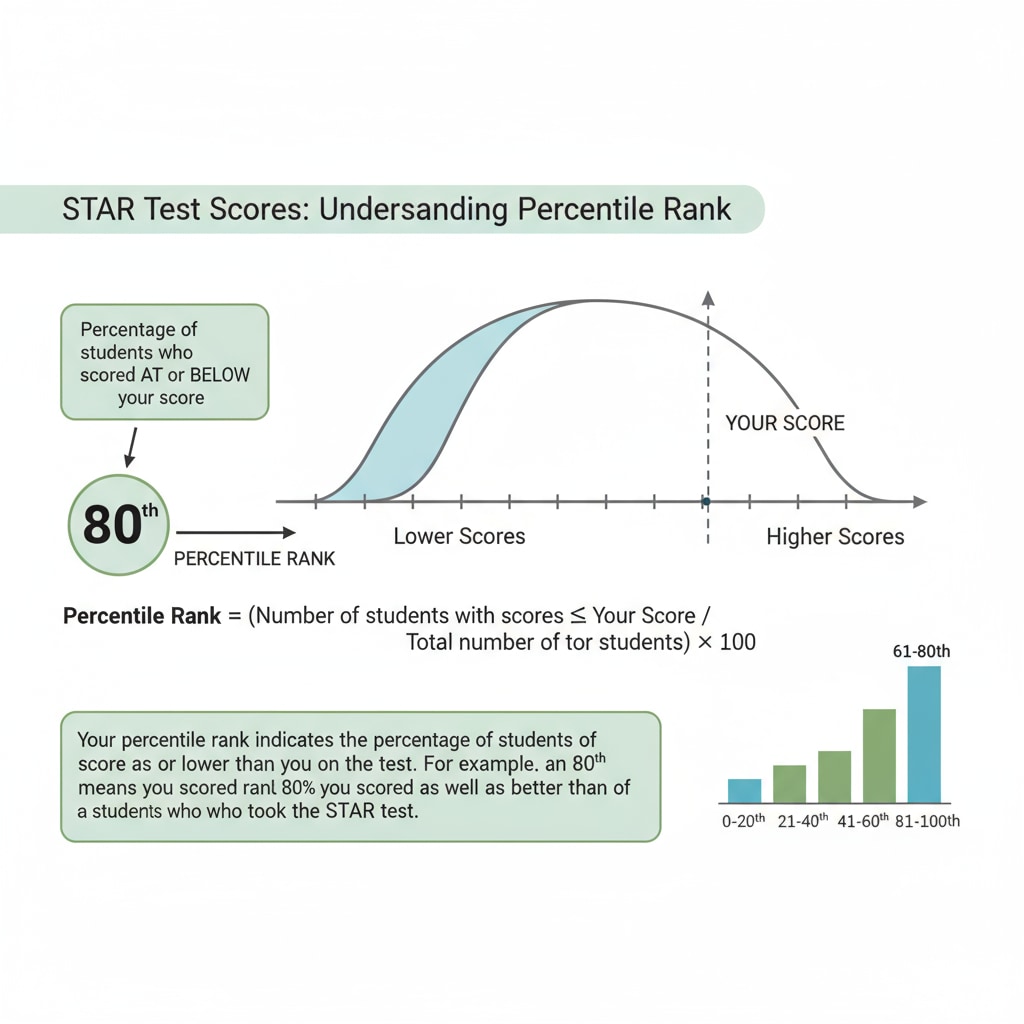STAR test scores, percentile ranks, and student performance are crucial aspects in the realm of education that often puzzle parents and educators alike. The STAR test, a widely used assessment tool, provides a snapshot of a student’s academic progress. However, understanding the true reliability and meaning behind these scores is essential.

The Basics of STAR Test
The STAR test, or the Standardized Testing and Reporting test, is designed to measure a student’s knowledge and skills in various subjects such as reading, math, and language arts. It is administered to students across different grade levels. This test is not just about rote memorization but also assesses critical thinking and problem-solving abilities. For example, in the math section, students may encounter word problems that require them to apply mathematical concepts in real-life scenarios. According to Educational Testing Service’s (ETS) research, these types of assessments help in gauging a student’s overall academic capabilities.
Understanding Percentile Ranks
Percentile ranks are a key component when analyzing STAR test results. A percentile rank indicates the percentage of students in a particular group who scored at or below a given score. For instance, if a student is in the 80th percentile, it means they performed better than 80% of the students in the comparison group. This gives parents and educators an idea of how a student stacks up against their peers. However, it’s important to note that percentile ranks are relative measures. As explained on the National Center for Education Statistics (NCES) website, they don’t necessarily reflect absolute knowledge or skills.

The percentile rank can be influenced by various factors. The composition of the comparison group plays a significant role. If the group consists of students from high-achieving schools, the percentile rank for a particular student may be lower compared to a group with a more diverse range of academic abilities. In addition, test-taking anxiety can also impact a student’s performance and subsequently their percentile rank. For example, a student who is normally a high performer may score lower due to anxiety during the test, thus affecting their percentile standing.
Reliability of STAR Test Scores
The reliability of STAR test scores is a topic of great importance. While the test is designed to be a reliable measure of student performance, there are limitations. One factor affecting reliability is the test’s content validity. If the test questions do not accurately cover all aspects of the curriculum, the scores may not fully represent a student’s knowledge. Another aspect is test-retest reliability. Some students may perform differently on subsequent tests, even if the material remains the same. This could be due to factors such as improved test-taking strategies or changes in the student’s learning environment.
To enhance the reliability of STAR test scores, educators often use multiple measures. For example, they may combine test scores with classroom performance, assignments, and projects. This holistic approach provides a more comprehensive view of a student’s academic capabilities. By doing so, they can reduce the impact of any potential flaws in the test itself and gain a more accurate understanding of a student’s true performance.
The True Educational Significance
The educational significance of STAR test scores goes beyond just a number on a report card. These scores can be used as a diagnostic tool to identify areas where a student may need additional support. For example, if a student scores low in a particular subject area, it can signal the need for targeted instruction or extra practice. On the other hand, high scores can indicate that a student may be ready for more challenging material.
However, it’s crucial that parents and educators do not rely solely on STAR test scores to evaluate a student’s academic potential. A student’s overall growth and development involve many factors such as creativity, critical thinking, and social skills, which may not be fully captured by a standardized test. Therefore, while STAR test scores and percentile ranks are valuable pieces of information, they should be considered in conjunction with other aspects of a student’s educational experience.
Readability guidance: This article uses short paragraphs and lists to summarize key points. Each H2 section provides a clear focus on different aspects related to STAR test scores, percentile ranks, and student performance. The passive语态 is kept to a minimum, and transition words like “however,” “for example,” and “in addition” are used throughout to enhance readability and flow.


